
Romania
For a full scale picture, please click on the picture shown !
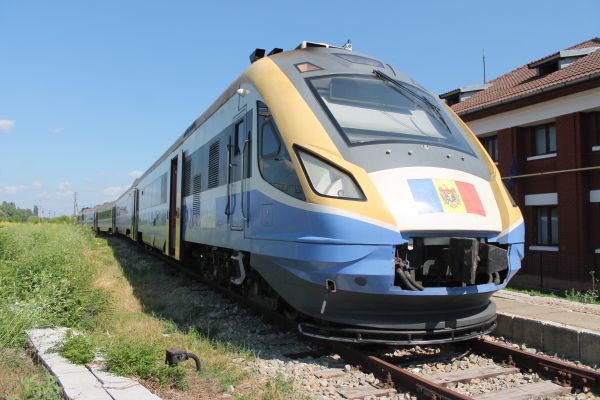
This is a class D1M diesel multiple unit of the Romanian state railways Căile Ferate Române, CFR. The original D1 was an old diesel multiple
unit built by Ganz-Mavag in Hungary in the 1960s to the 1980s and they were quite common throughout the former Soviet Union and also throughout
much of the former eastern bloc countries. This one is a thoroughly rebuilt D1, now called D1M (M for modernised). In 2012 Moldovan Railways
and the company Electroputere VFU of Romania started a thorough rebuilding program for these old trains and this is the result. It has for example
received totally new Volvo Penta ship's engines.
Picture from Socola station in Iasi, Romania 25.6.2017 by Timo Varshukov.
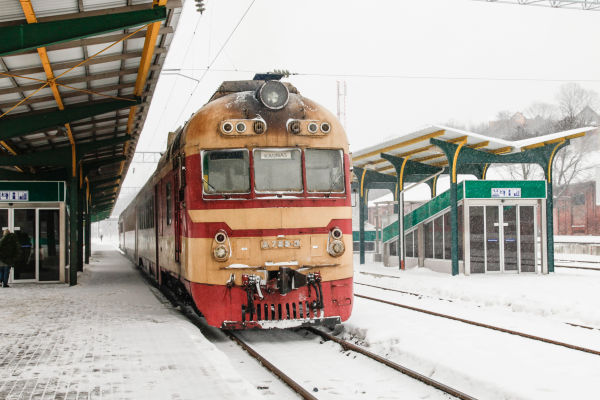
For comparison: This is the original D1 train of Ganz-Mavag in its original Soviet Russian painting. Quite a change if you compare this with the
modernised one above.
Picture of the original D1 from Kaunas, Lithuania 29.12.2010 by Kyösti Isosaari.
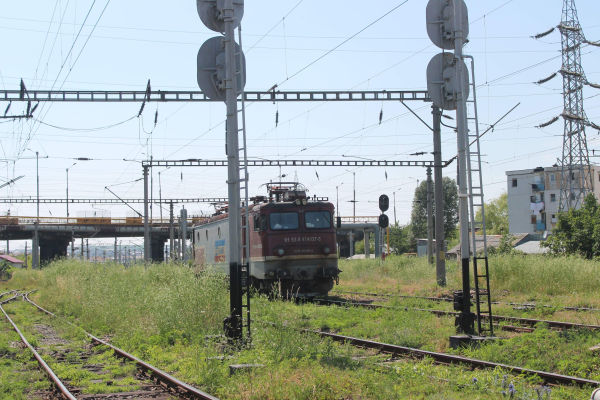
A class 47 electric cargo locomotive of the Romanian state railways CFR - Căile Ferate Romăne cargo division CFR Marfă.
It is a six axle locomotive with a power rating of 6600 kW. These are modernised from class 40 or 41 machines since 2006. Top speed is 120 km/h.
Picture from Socola station in Iasi, Romania 25.6.2017 by Timo Varshukov.

A class 41 electric locomotive of CFR's passenger services division CFR Călători. This is a 5100 kW six axle type. These machines were built by
Elektroputere 1966–1991 and they have a top speed of 160 km/h.
Picture from Brasov 4.5.2018 by Marek Graff.
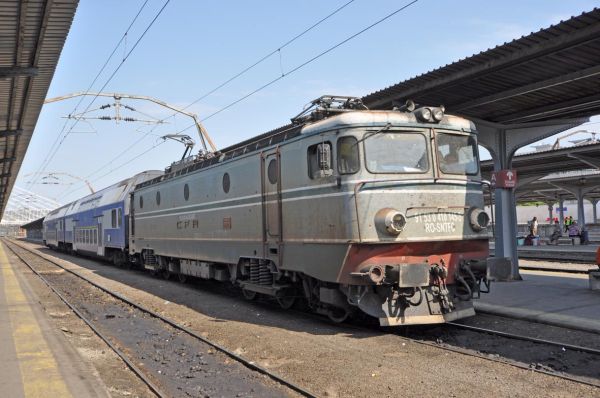
Another class 41 electric locomotive, but still in the old colours of CFR.
Picture from Bucharest 6.5.2018 by Marek Graff.
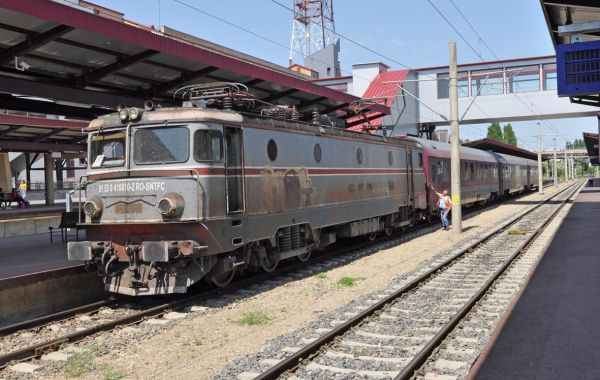
Still another class 41 electric locomotive, this time with new InterCity coaches.
Picture from Galati 5.5.2018 by Marek Graff.
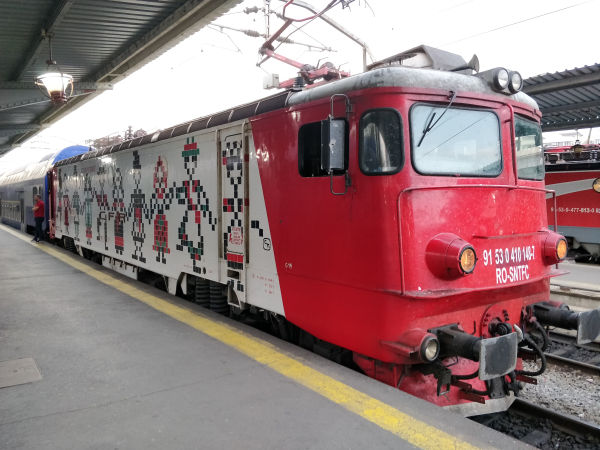
This old class 41 electric locomotive has received a new painting.
Picture from Bucharest main station platform 4/5 on 15.8.2019 by Markku Salo.
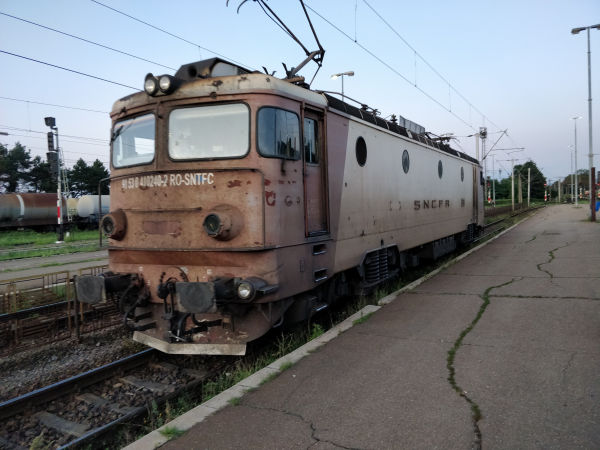
One more of Romanian state railways CFR's class 41 electric locomotives, but this one is in a very desolate and rusty state, although it's
still in use. Not even the normal lamps are functioning any more, but someone has screwed temporary lamps onto it very low down.
Picture from Brasov 15.8.2019 by Markku Salo.
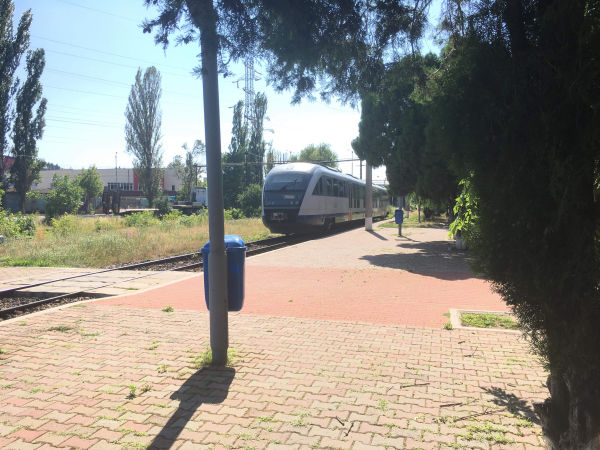
This diesel multiple unit is a Siemens Desiro, known in Romania as the class 96 of the state railways passenger division CFR Călători.
These same trains are known in Germany as the German Baureihe 642. They are used in many other countries too, for example Denmark.
Its a two coach DMU built in 2003 with a power rating of 550 kW and a top speed of 120 km/h. CFR Călători has 120 of them.
Picture from Socola station in Iasi, Romania 25.6.2017 by Timo Varshukov.

A closer look at a similar Siemens Desiro train just as it lets its passengers step out.
Picture from Bucharest 13.8.2025 by Markku Salo.
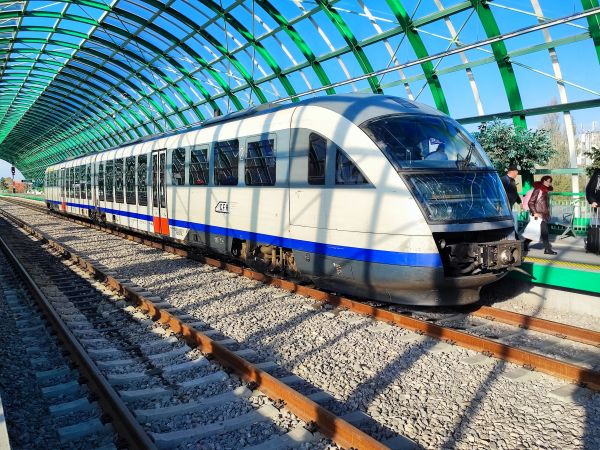
One more picture of a Siemens Desiro, Romanian class 96.
Picture from the station of Bucharest airport 19.11.2022 by Markku Salo.

Romanian state railways class 60 locomotive, originally class 060-A. It is a diesel-electric six axle locomotive built by Electroputere Craiova,
but it is based on a Swiss design of the companies SLM Winterthur, BBC and Sulzer and that is the reason why it quite a lot resembles the Swiss
federal railways SBB's electric locomotive class Ae 6/6. They were built during a long period, 1959 to 1981.
Picture from Brasov 19.9.2010 by Markku Salo.

Same train as in the picture above. These old double decker coaches are the same that used to be common in former East Germany (DDR) in regional
traffic for example in the area of Leipzig. Nowadays these have long since been scrapped in Germany. They were built by Waggonbau Görlitz in the DDR.
Picture from Brasov 19.9.2010 by Markku Salo.
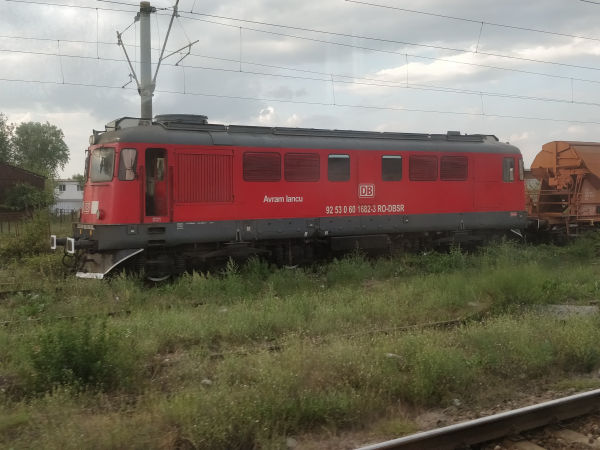
This is another class 60 diesel locomotive, but this one is owned by Deutsche Bahn's daughter company DB Schenker Rail Romania, now DB Cargo
Romania.
Picture from Videle 15.8.2019 by Markku Salo.
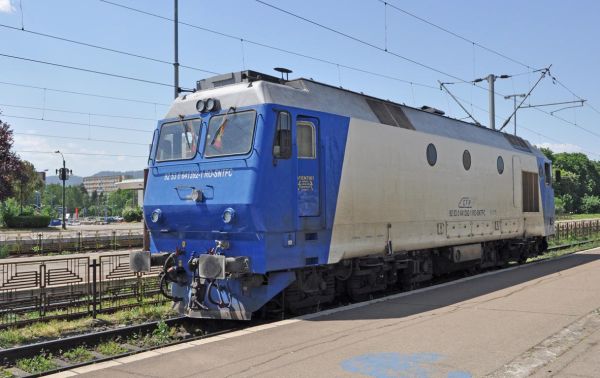
This is a class 64, six axle dieselelectric machine, which is a rebuilt and remotorised class 60 locomotive. See above for the original class 60.
Now these class 64 machines have an EMD turbocharged V8 engine of the type 8-710G. It has a power rating of 1582 kW and a max speed of 100 km/h.
the modernisations from class 60 to class 64 have been made since 2004.
Picture from Brasov 4.5.2018 by Marek Graff.
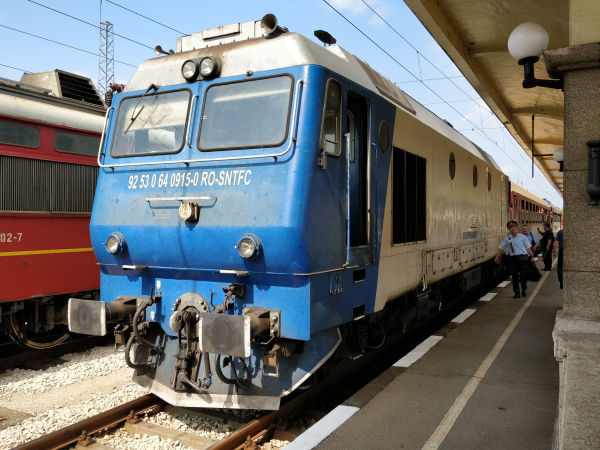
Another class 64 modernised diesel, this time photographed on the Bulgarian side of the border, at the border town station of Ruse.
Picture from Ruse, Bulgaria 15.8.2019 by Markku Salo.
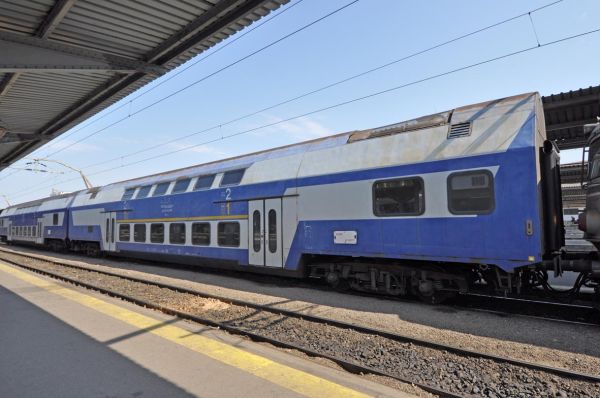
German made doubledecker coaches, used in regional traffic around Bucharest.
Picture from Bucharest 6.5.2018 by Marek Graff.

This is an old class 80 dieselhydraulic shunter engine of the Romanian state railways CFR, now working for their passenger services division CFR Călători.
These machines were built by by the factory "23 August Works", now Faur, 1966 to 1985 and many of them have already been modernised and remotorised - but this
one not. This is a 920 kW machine with a top speed of 100 km/h. They are used for shunting but also for light line traffic.
Picture from Brasov 4.5.2018 by Marek Graff.

This large six axle locomotive is a Transmontana built by the company Softronic and here running for CFR Călători. The Transmontanas are based on an old
Swedish design the patents of which Asea sold to Romania a long time ago. Now lately Softronic has been able to sell these machines back to Sweden where
they pull extremely heavy raw steel trains.
Picture from Bucharest 13.8.2025 by Markku Salo.
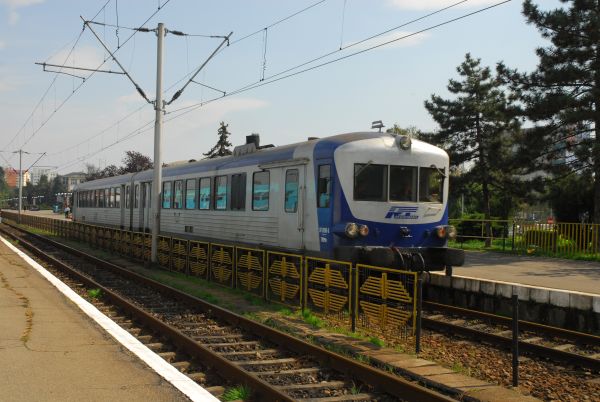
These are old French SNCF series X4500 trains, bought used to Regiotrans in Romania. There are now five private passenger train operators in Romania and
Regiotrans is one of them.
Picture from Brasov 19.9.2010 by Markku Salo.
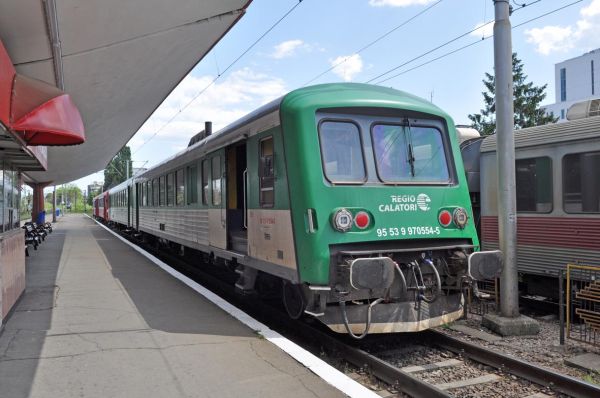
Regio Calatori is one of the many private rail operators in Romania now. This class 57/97 trains are former French state railways SNCF's class X4500 railbuses.
The X4500 model dates back to the years 1963 to 1970 and some of them were rebuilt/modernised in France since 1980. This is one of those rebuilt units.
Picture from Brasov 4.5.2018 by Marek Graff.
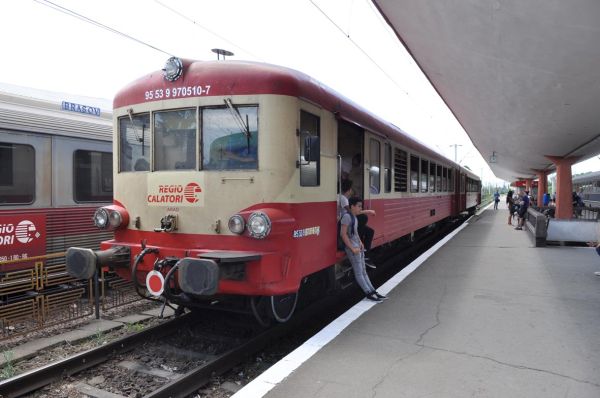
Also this Regio Calatori class 57/97 railbus is one of the former French SNCF X4500 railbuses, but this one has not been rebuilt and modernised. It still looks
as it used to look like in France in the 1960s.
Picture from Brasov 4.5.2018 by Marek Graff.
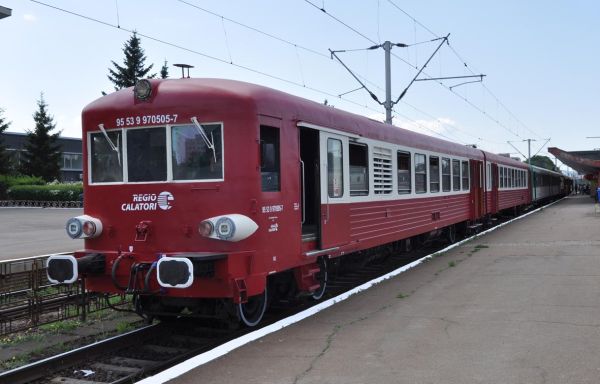
Yet another one of the Regio Calatori's class 57/97 railbuses, former SNCF X4500. This one has not been modernised, but at least it has been freshly repainted.
Picture from Brasov 4.5.2018 by Marek Graff.
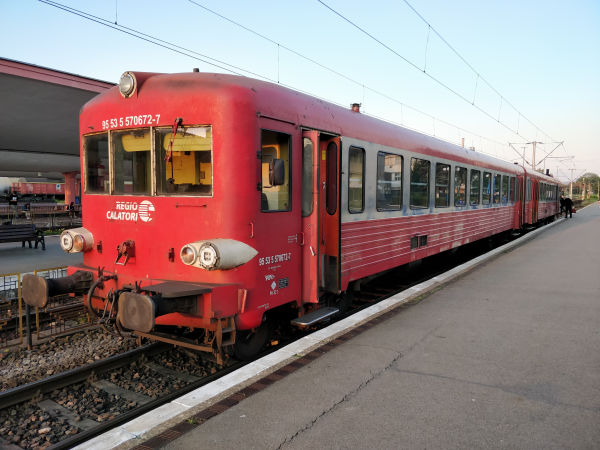
Still one more of Regio Calatori's class 57, former French SNCF X4500 railbuses without any modernisation, just like they used to be in France in the 1960s.
Picture from Brasov 17.8.2019 by Markku Salo.

This one is now Regio Calatori's train 5003 but it used to be a diesel multiple unit of class X72500 of the French state railways SNCF. They used to operate
fast Intercites lines south of Paris and in the very south of France on lines with no electricity, but they are quite old trains already by now. It still
carries the colours of SNCF.
Picture from Bucharest 14.8.2025 by Markku Salo.

This one is a former Danish DSB's Intercity train IC2. DSB ordered these and also longer IC4 trains from what then was AnsaldoBreda of Italy.
These trains arrived years late and when they finally did arrive, DSB found out that they did not even nearly fulfill the prmises that AnsaldoBreda
had made. They were almost instantly taken out of use. One of the key reasons was that these were so slow and especially slow to accelerate that
it was impossible to stick to the planned timetables with them. These IC2 trains stood a long time sidetracked and were finally sold to a private
train operator ATC in Romania. The Romanians do not much care of acceleration speed since there is not much of other traffic and they have been
quite happy with these trains. ATC or Astra Trains Carpatic has agreed to buy even the rest of these IC2 trains from Denmark. They are mainly used
in traffic between Arad and Oradea in western Romania close to the Hungarian border. DSB sold also all of its longer IC4 trains thereby getting
rid of all of its AlsaldoBreda trains. They started litigation agains AnsaldoBreda, but AnsaldoBreda went practically bankrupt and the Japanese
company Hitachi has now bought its factories.
This is an IC2 of now Astra Trains Carpatic in Bucharest 13.8.2025. Picture by Markku Salo.
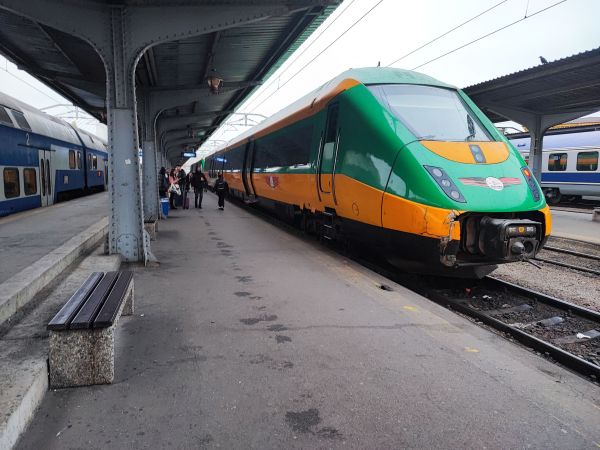
A similar formerly Danish IC2 train taking passengers at Bucharest Nord.
An IC2 of Astra Trains Carpatic at Bucharest Nord 18.11.2022. Picture by Markku Salo.

This one is a renovated and rebuilf former Deutsche Bahn Br614 diesel multiple unit from Germany. It has now received a totally new driver's cab
and an airdonditioner on top of its roof. DB got rid of these old trains already quite some time ago and by then most of them were sold to Poland
where they again were quicky sidetracked when newer trains arrived. This has now gotten a third life at the private company Transferoviar Călători.
Picture of Transferoviar Călători class 761, former DB Br614, at Bucharest 13.8.2025 by Markku Salo.
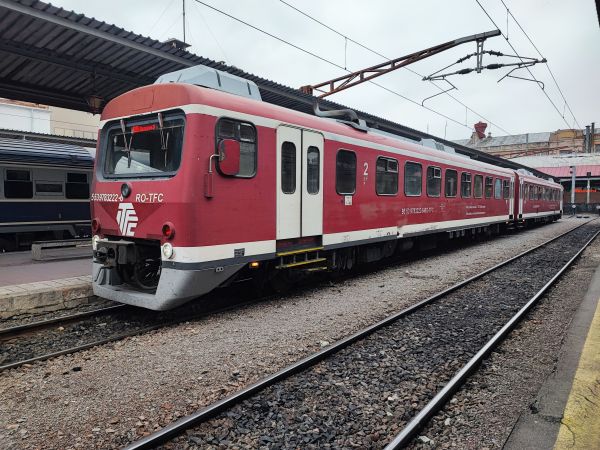
This one is a very rare train. It used to be a Wadloper of the Dutch state railways NS. Many Wadlopers are just one coach long. Towards the end of
their life in Holland, there were only a few two coaches long variants in use. Wadloper means literally somebody running on the vast mud fields in
northern Netherlands. This one used to be an NS Wadloper type DH2 (the single wagon model was DH1). They were built by Düwag in Germany. After NS lost
in a bargaining the lines that these trains served and they were replaced by Stadler GTW 2/6 and 2/8 trains of Arriva these were left without a job
and remained sidetracked without use for years. These were built by Düwag in Düsseldorf in 1981-82 and originally there were just 31 of these two
coaches long trains plus 19 one coach long DH1 units. Their top speed is/was 100 km/h.
Picture of a two coaches long Wadloper DH2, now Transferoviar Călători class 783 from Bucharest 14.11.2022 by Markku Salo.

Another former Dutch Wadloper DH2. Now it has been renovated and repainted
Picture of a two coaches long Wadloper DH2, now Transferoviar Călători class 783 from Bucharest 13.8.2025 by Markku Salo.

This is an Alstom Lint railbus, still in the colours of Abellio. Abellio is/was a daughter company of the Dutch state railways NS. Abellio's unit
operating in Nordrhein-Westfalen state of Germany went bankrupt and now this one of Abellio's trains has ended up in Romania with the stickers
of Transferoviar Călători
Picture of a two coaches long Lint from Bucharest 14.8.2025 by Markku Salo.

This one is the only "bullet train" type of a train ever built in Romania. It is called Hyperion and has been built by Softronic in Craiova.
The operator is Softrans, a private train company. These trains serve the Craiova - Bucharest North - Braşov route. Softrans has already for years
been taping the whole train all over with advertisement tapings to cover ugly graffities.
Picture from Bucharest 14.8.2025 by Markku Salo.
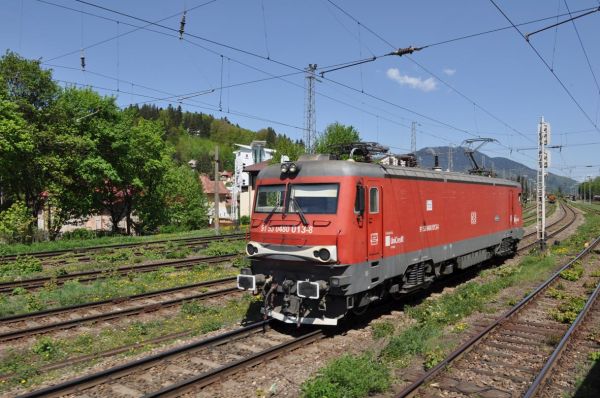
One of the private or open access cargo operators in Romania is the German DB, Deutsche Bahn as DB Cargo Romania. They started by importing locomotives from
Germany, Denmark and from the UK, but now they have even newer machines in use in Romania. This one is a DB class 480. The type is called Transmontana.
It is an 8200 kW strong and 160 km/h fast six axle machine built by the company Softronic and it is the newest locomotive type in the country. Transmontanas come with two
distinctly different locomotive fronts. DB has 19 of them in Romania.
Picture 4.5.2018 by Marek Graff.
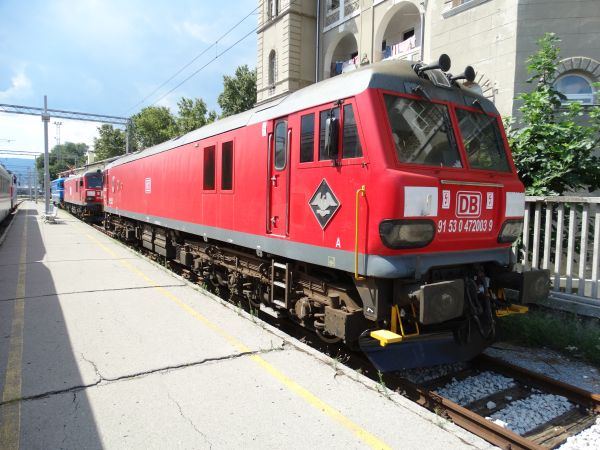
These two machines are former British Rail class 92 machines. They were built for traffic in the Channel tunnel and therefore they can operate either
from 25 kV overhead catenary or from a 750V DC side rail. Many of these machines became superfluous in the Channel tunnel traffic and some of them
ended up at DB. DB took them to Romania and used them there for several years. But now they have been pushed out of use also in Romania and superceded
by Transmontana locomotives shown above. These two machines still show DB's paintings and registration details as DB Cargo Romania, but in fact at the
time this photograph was taken, these two were already owned by a private Russian company. They had been in tests in Croatia and the intention is to
start using them in coal trains between the Croatian-Hungarian border and the harbour of Bakar on behalf of the company Transagent Špedicija.
Built by ABB and Brush Traction in the early/mid ’90s, British Rail Class 92 was originally designed to operate trains between Britain and France
through the Channel tunnel. With a total of 46 units, the fleet is capable of achieving а maximum power of 5 MW on overhead 25 kV AC or 4 MW on third
rail 750 V DC. Apart from the ones sent to Romania, DB Cargo also uses such locomotives in Bulgaria, where they are still wearing the original EWS
livery. (Source: railcolornews.com)
Picture from the station of Rijeka, Croatia 10.7.2018 by Ilkka Siissalo.

This locomotive is marked as belonging to Train Hungary and it is photographed here in Hungary, but it is a Romanian class 40 machine registered
in Romania. Class 40 machines were made by Elektroputere 1965-91. It's a six axle 5100 kW machine with a top speed of 120 km/h. It is an older
version of the class 41 pictured higher up on this page. Train Hungary is a private cargo operator, which operates not only in Hungary but also in
Croatia. All their locomotives are of Romanian origin.
Picture from Hidasnemeti station in Hungary 4.7.2018 by Ilkka Siissalo.
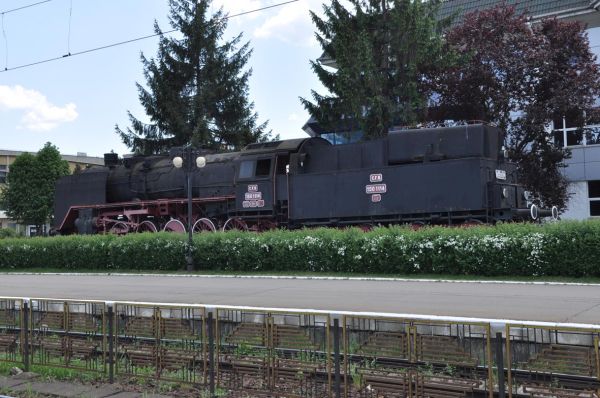
A CFR class 150 steam engine has been placed onto a stand as a monument at the station of Brasov. It's a wartime German Br50 machine.
Picture from Brasov 4.5.2018 by Marek Graff.
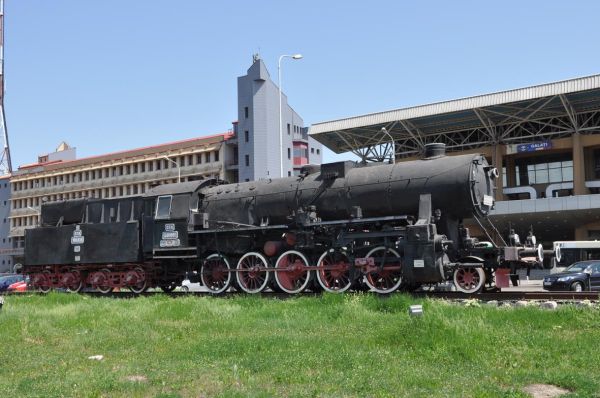
Another steam locomotive also marked as CFR class 150 is kept as a monument at the station of Galati. Both this one and the machine in the
picture above are marked as class 150, but they are not identical. This one is a German Br42 war locomotive, "Kriegslok" left behind by the
German army during World War two. The locomotive at Brasov is also German, but it is of the German DRG class Br50 captured to Romania at the
end of the war.
Picture from Galati 5.5.2018 by Marek Graff.

